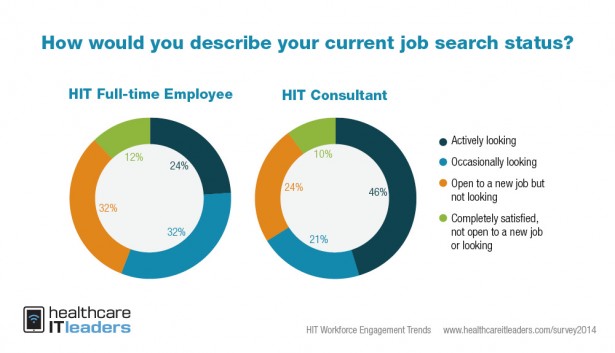How to Find Skilled HIT Candidates That Many Employers Overlook

When it comes to IT recruitment, hospital hiring managers may feel like they are looking for a needle in a haystack.
But our survey of the healthcare IT workforce points to two rich veins of HIT candidates that should be tapped more often by recruiters.
Our report — and our own day-to-day outreach — points to consultants and “passive” but currently employed IT professionals as two large candidate groups that can be converted to new, full-time opportunities under the right circumstances.
Giving consultants their due
By design, consulting work is short-term, measured in months, not years, and a resume dotted with multiple, short-term jobs at different locations can be dismissed by some hiring managers.
Consultants counter that their skills are enriched by working on large-scale projects in varied healthcare environments. Their ability to quickly integrate into different settings and solve diverse challenges should trump their lack of longevity with a single employer.
Higher pay vs. job security
Employers may also be wary of the salary demands of health IT consultants, fearing that they can’t match the premium that the market currently pays for their skills.
Consultant pay is high and rising, but in our survey, we found a surprisingly large number of current consultants who were eager to return to full-time employee status at a healthcare employer.
Thirteen percent said they were “very likely” to switch to become a full-time employee in the coming year, and 25% said they were “somewhat likely.”
Why? Some current consultants may be travel-weary, concerned about their future prospects or searching for job security and benefits. Whatever their reasoning, this large group of highly-skilled HIT workers represents a recruitment opportunity for hospitals.
Passive candidates, available opportunities
A second, larger group that may get short-shrift from full-time recruiters are so-called passive candidates, those who are currently employed and not actively job searching.
 In our survey, only 12% of FTEs were truly out of the job market. That is, they said that were completely satisfied in their current role and not open to a new job. But 56% of current HIT employees said they were either “open to a new job, but not looking” or “occasionally looking.”
In our survey, only 12% of FTEs were truly out of the job market. That is, they said that were completely satisfied in their current role and not open to a new job. But 56% of current HIT employees said they were either “open to a new job, but not looking” or “occasionally looking.”
In other words, the majority are passive job seekers who would entertain a switch to a new employer.
Our survey found that most HIT workers, regardless of job status, are receptive to recruitment outreach, so employers have little to lose by contacting skilled, passive candidates to at least gauge their level of interest in new opportunities.
And with as many as one-third of healthcare executives reporting that IT initiatives have been put on hold because of staff shortages, new recruiting approaches may be in order to help fill critical needs.
Find more great HIT Workforce Engagement data in our free report below.
